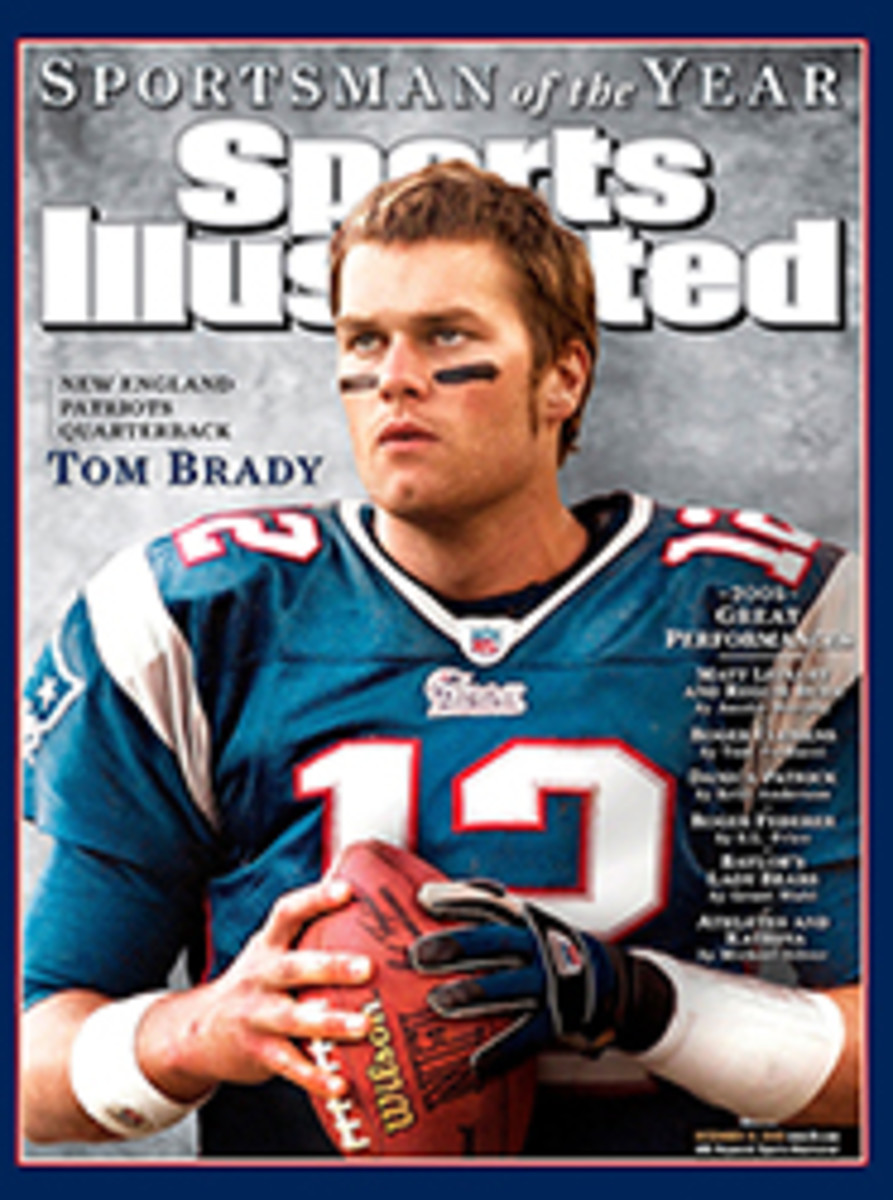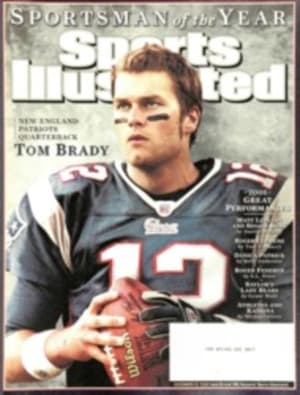
King Strut
In what has been an annus mirabilis for touchdown celebrations, Chad Johnson has Riverdanced, taken a knee and proposed to a Bengals cheerleader, and used an end zone pylon as a putter. Terrell Owens mimicked a waiter, snapping a napkin over his wrist and serving up a TD on an invisible tray. The Lions' Roy Williams assumed a crossed-legged meditative end zone pose, combining Eastern devotion with Western worship of self. These days you don't even need six to show off; witness the lowly Texans strutting after a first down.
Some fans--and NFL suits--are appalled. They long for the days before the hip-hop-ization of American sports, when you broke the plane and didn't get fancy. Even those who enjoy the end zone antics tend to see them as, Billy White Shoes Johnson's Funky Chicken aside, a new thing and a black thing. But not so: This all goes back some 60 years to one slightly pudgy white man, a wrestler, who's since been largely forgotten. It's a Gorgeous thing.
Gorgeous George was the great showman of the 1940s and '50s, one of the first superstars of TV. His long hair was dyed platinum and marcelled into myriad curls, his squat body encased in garish robes. The Gorgeous One--a.k.a. The Human Orchid and The Sensation of the Nation--invented the loudmouthed, attention-seeking persona that permeates today's sports. Not one of the top-tier NFL celebrators SI polled recently had heard of him. But if George, who died in 1963, is looking down, he must be one proud papa.
Before George, born in Nebraska in 1915, sports stars were heroes--never villains or "heels," in wrestling parlance. They were tough, modest and short-winded, like Lou Gehrig or Joe Louis. Gorgeous was a diva in every gesture and syllable. Other grapplers wore plain, dark trunks, black shoes and ratty old robes; George wore pink satin, silver lamé, lace and ermine. He pulled up to arenas in purple Packards and big Cadillacs. Pomp and Circumstance blared over P.A. systems as he strode to the ring, and before he deigned to place his dainty white-shod feet on the mat, his "valet" Jefferies, a Jeeves-ish character in tails, would use a spray gun to mist the floor with perfume. Jefferies would then remove the gold-plated pins holding the Gorgeous curls in place, and the wrestler would toss them to women in the audience. (Scuffles were common.)
During the match George would kidney-punch and eye-gouge, then hide behind the ref. Incensed, the audience, playing the same role as outraged NFL fans do today, rained jeers down on him. "You're ignorant peasants," George informed them. "Beneath contempt."
It was a pivotal moment in pop culture. The Godfather of Soul, James Brown, says in his 2005 memoir, I Feel Good, that he used parts of the Orchid act to "create the James Brown you see on stage." In his recent book, Chronicles: Volume One, Bob Dylan also says he was inspired "for years to come" by a G.G. encounter in Hibbing, Minn. But George made his greatest disciple in 1961, passing the torch to a young boxer named Cassius Clay.
Clay was already the Louisville Lip. But when he and George met at a Las Vegas radio station, the wrestler's gale-force trash talking blew the boxer's ears back. If he lost to Classy Freddie Blassie, George ranted, "I'll crawl across the ring and cut my hair off! But that's not gonna happen because I'm the greatest wrestler in the world!" At the match, Ali remembered later, "I saw 15,000 people comin' to see this man get beat. And his talking did it. I said, 'This is a gooood idea!'" In the locker room afterward the 46-year-old wrestler told the 19-year-old, "A lot of people will pay to see someone shut your mouth. So keep on bragging, keep on sassing and always be outrageous." Ali did. And so have generations of athletes since.
Before George was Gorgeous he was just George Wagner. He went about 5'9", 190 pounds, with formidable strength and wrestling skills, but plain old (dark-haired) George wasn't making much impact or much money, wrestling on undercards near his home in Oregon. In 1939 he married his sweetheart, Betty Hanson, in a Eugene ring, showing his budding showbiz instincts and gaining an impish coconspirator. (The 4'11" Betty told him, "You're too clean." She made him a royal-blue satin robe festooned with sequins, which drew shouts of "Sissy!" and "Mama's boy!") Most important, George had a postmodern vision: He sensed that the sizzle was as important as the steak. And the market did not contradict this notion. In 1951 Joe DiMaggio retired, walking away from a salary of $100,000; George earned a reported $160,000.
A couple of Sundays back, Chad Johnson gave Owens a sideline scribble-out, holding up a sign reading, T.O. I GOT YOU BABY after he scored. It would have been more fitting if he'd borrowed Owen's Sharpie--or Joe Horn's cellphone--and sent out a message of thanks to the man who started it all.
Freelance writer John Capouya is researching a book on Gorgeous George.
The Red Sox sued Mientkiewicz to recover the ball he caught for the last out of the World Series --FOR THE RECORD, PAGE 36
ILLUSTRATION
ILLUSTRATION BY JOHN CUNEO

